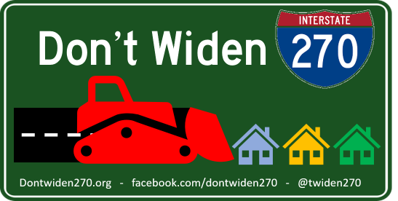On February 18, 2021, the Maryland Department of Transportation (MDOT) and the Maryland Transportation Authority (MDTA) announced they selected the private, Australian-based consortium Accelerate Maryland Partners, LLC as the toll-lane project’s Phase 1 Developer. Phase 1 includes I-495 from the George Washington (GW) Parkway in Virginia, across and including the American Legion Bridge to I-270, and I-270 from I-495 to I-70 in Frederick.
As Phase Developer, Accelerate Maryland Partners will oversee the design, financing, construction, and maintenance of the toll lanes for a term of 50 years. It will come up with the actual design for the managed lane project, and the public won’t know the details and commitments until they are announced. The Phase Developer, not MDOT, will be the primary liaison with the public, and will interact and negotiate agreements with affected stakeholders, including the City of Rockville.
Accelerate Maryland Partners, LLC, is a consortium of four firms. The team includes:
Lead Project Developer/Equity: Transurban (USA) Operations Inc. and Macquarie Infrastructure. Transurban is an Australian-owned company operating toll roads in Australia, the United States, and Canada. Macquarie Capital is the principal investment arm of Macquarie Group Limited, an Australian multinational investment bank and financial services company.
Designers: Dewberry Engineers, Inc. and Stantec Consulting Services, Inc. Dewberry provides professional engineering services in 17 states and is headquartered in Virginia. Stantec is a Canadian design company with offices worldwide.
Note: The construction contractor was dropped and no construction contractor has yet been named. That means MDOT moved ahead without knowing anything about the company that will build the toll-lanes!
We will report more information about the Phase Developer and details of their plans as they become available. Recent articles on the selection of the Phase Developer can be found at Dontwiden270.org’s website tab “Media Archives
Action Item
MDOT must obtain approval from the Maryland Board of Public Works (BPW) for a contract with a Phase Developer to begin pre-development design. For the project to move forward, two of the three BPW members must approve the agreement. Comptroller Peter Franchot is the swing vote.
Write Comptroller Franchot at pfranchot@comp.state.md.us. Tell him that no P3 agreement should be approved by the BPW until the final environmental impact statement (FEIS) is completed in accordance with NEPA regulations. An FEIS is essential to adequately assess and mitigate impacts to communities and properties, utility conflicts, and environmental consequences, and to develop a design that considers these critical factors.
As stewards of the State’s finances, the BPW must consider the costs that this project will incur. Governor Hogan promised there would be no net cost to taxpayers for the toll lane project, but MDOT’s own Draft Environmental Impact Statement and Request for Proposals show that’s not true. Tell Comptroller Franchot that Maryland taxpayers could be stuck with hundreds of millions of dollars in expenses and future costs. Refer to our February 7 newsletter for more information on financial concerns.
Please Support our Valued Partner
Some of you, our readers, have offered to help cover our costs, but we are not set up to receive donations. However our valued partner, the Maryland Transit Opportunities Coalition (MTOC), can accept donations. MTOC is a unique center of technical and policy expertise on transit and equitable transportation and provides us with insight to give you accurate information.
MTOC uses donations to help cover its website expenses, printing of fliers, and more. To make a donation of any size, online or by check, follow this link: https://transitformaryland.org/contribute. Thank you!
Upcoming Meetings
Wednesday, February 24 at 9:00 am:
Virtual rally and press conference on the MDOT Promises Act and P3 Reform bill. This event is happening a few hours before the MDOT Promises Act will be heard in the Senate Budget & Taxation Committee. Dontwiden270.org is a co-sponsor of this rally. Please sign up for the event here.Thursday, February 25 at 9:00 am:
The Maryland Transportation Authority (MDTA) Board is meeting to discuss the P3 agreement. This is an open meeting conducted via livestreaming, and the public can watch. Here's the agenda for the meeting.
Short Video Worth Watching
Here's a rather vivid VOX video (6 min) showing how highways grow…are we headed for this with I-270?
https://www.youtube.com/watch?v=2z7o3sRxA5g


